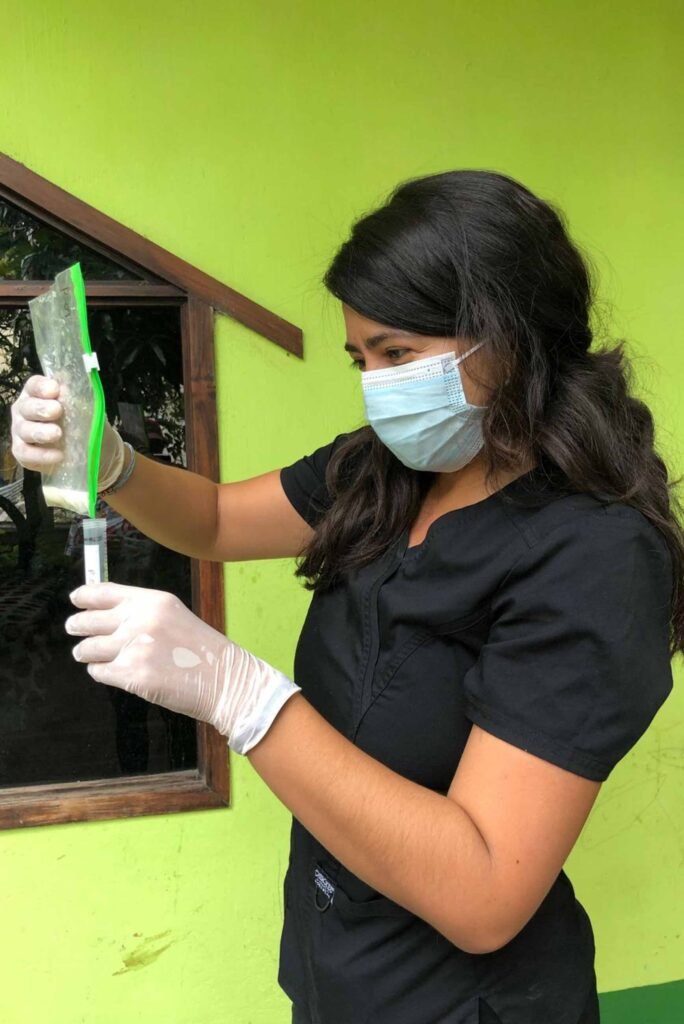Research led by the University of Arizona Health Sciences found a potential link between growth problems among infants and high levels of toxic metals and other elements in the breast milk of Mayan women in Guatemala’s Lake Atitlán watershed region.
The findings were reported in the journal Environmental Pollution.
Guatemala has the highest rate of impaired growth, or stunting, in the Western Hemisphere. Stunting is frequently attributed to poor nutrition and infections. Many studies have linked high levels of metals in drinking water to developmental, neurological, and learning problems in young children, but this is the first study to demonstrate an association with stunting in the Americas.
The new research results could contribute to a better understanding of the health impacts of such exposures and lead to new approaches for prevention in Guatemala and other countries around the world.
“Detecting toxic metals in breast milk among rural Guatemalan mothers is deeply concerning and highlights the potential role of environmental pollution in undermining child development,” said Sandra Rodríguez Quintana, MD, MPH, a postdoctoral research associate at the U of A Mel and Enid Zuckerman College of Public Health.
“Our work calls for interventions to protect maternal and child health and understand how environmental concentrations of metals may be contributing to stunting and other health issues.”
Quintana has been working with communities in the Lake Atitlán watershed since 2022. Quintana and senior author Frank von Hippel, Ph.D., a professor of public health and director of the One Health program, wanted to look beyond malnutrition and poor health to ask about possible influences of environmental contaminants on children’s growth.
The research team studied 80 mothers and their infants from four different Lake Atitlán communities: San Juan La Laguna, San Pedro La Laguna, Panajachel and Santiago Atitlán. The scientists analyzed breast milk samples from the mothers and measured the infants’ lengths.
They detected concentrations of arsenic and lead that exceeded World Health Organization safety standards in breast milk in mothers from Panajachel and Santiago Atitlán.
Additionally, they found that higher breast milk concentrations of arsenic, barium, beryllium and lead were associated with impaired growth of infants in these communities.
Breast milk is the best source of nutrition for infants under six months of age. It can also be a potential route of exposure to toxic metals and other contaminants that may impair neurological development and immune function.
The researchers also examined the levels of toxic metals and metalloids in drinking water samples in each area.
They found higher concentrations of arsenic and barium in Panajachel and Santiago Atitlán than in other areas, indicating that drinking water may be an important source of exposure to toxic elements.
“We are working with colleagues in Guatemala to develop interventions that protect maternal and child health,” von Hippel said.
“Drinking water contaminated with toxic elements such as arsenic and pathogenic microbes imposes a serious burden on public health, especially for the developing child.”
More information:
Sandra Rodríguez Quintana et al, Exposure to toxic metal(loid)s via breastmilk and stunting in infants living in the Lake Atitlán watershed, Guatemala, Environmental Pollution (2025). DOI: 10.1016/j.envpol.2025.126273
Citation:
Toxic metals linked to impaired growth in infants in Guatemala (2025, July 11)
retrieved 11 July 2025
from https://medicalxpress.com/news/2025-07-toxic-metals-linked-impaired-growth.html
This document is subject to copyright. Apart from any fair dealing for the purpose of private study or research, no
part may be reproduced without the written permission. The content is provided for information purposes only.


